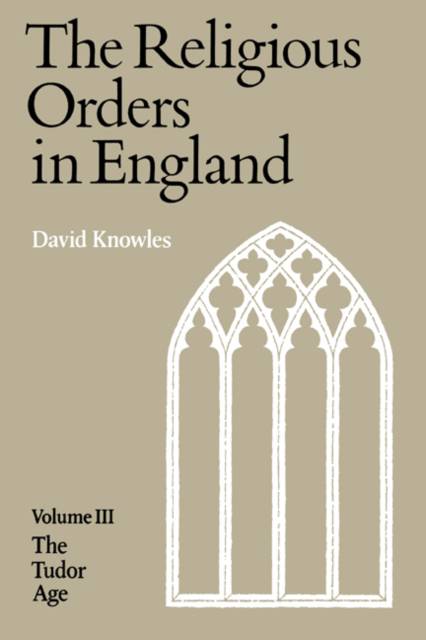
- Afhalen na 1 uur in een winkel met voorraad
- Gratis thuislevering in België vanaf € 30
- Ruim aanbod met 7 miljoen producten
- Afhalen na 1 uur in een winkel met voorraad
- Gratis thuislevering in België vanaf € 30
- Ruim aanbod met 7 miljoen producten
Zoeken
The Religious Orders in England
David Knowles, Dom David Knowles, Knowles Dom David
Paperback | Engels
€ 72,45
+ 144 punten
Omschrijving
This volume opens with a survey of monastic life and activities in the early Tudor period, which throws new light on the fortunes of the Cistercian abbeys and on the influence upon the monks of the new humanist education. Chapters are devoted to Bishop Redman's visitations of the white canons, to the rural pursuits of Prior More of Worcester, to the friars ranged for and against the New Learning, and to the Carthusians; there are also a number of character sketches of notable abbots and others. There follows a review of the changing religious climate: of Wolsey's attempts at reform, of the all-perspective influence of Erasmus and of the career of Elizabeth Barton. The economic state of the monasteries is discussed as a prelude to the sombre story of the Suppression, illuminated by rare gleams of heroism. The fate and after-careers of the religious are treated in full from the record sources; there are chapters on the aftermath in Mary's reign and the linking with modern Benedictines, and an epilogue looks back over six centuries of English monasticism.
Specificaties
Betrokkenen
- Auteur(s):
- Uitgeverij:
Inhoud
- Aantal bladzijden:
- 540
- Taal:
- Engels
Eigenschappen
- Productcode (EAN):
- 9780521295680
- Verschijningsdatum:
- 31/10/1979
- Uitvoering:
- Paperback
- Formaat:
- Trade paperback (VS)
- Afmetingen:
- 153 mm x 231 mm
- Gewicht:
- 802 g

Alleen bij Standaard Boekhandel
+ 144 punten op je klantenkaart van Standaard Boekhandel
Beoordelingen
We publiceren alleen reviews die voldoen aan de voorwaarden voor reviews. Bekijk onze voorwaarden voor reviews.











